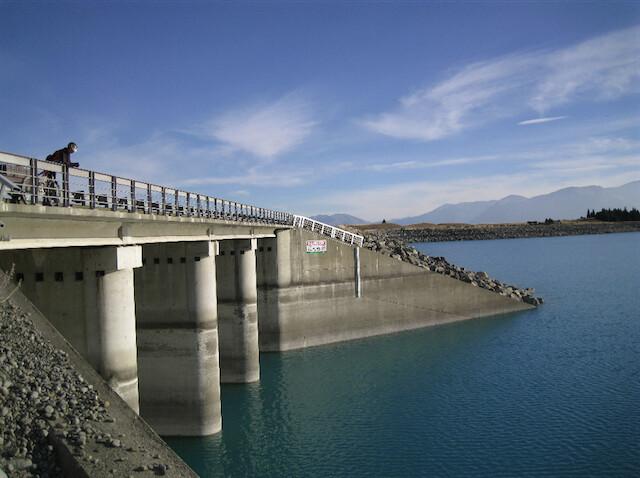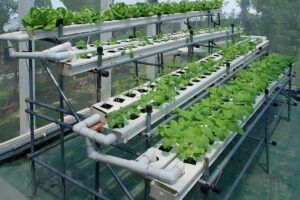In a world where every drop counts, a silent revolution is taking place, reshaping our spaces and redefining our relationship with water. Introducing the Green Revolution: an awe-inspiring transformation that harnesses the power of hydro systems to create sustainable and mesmerizing landscapes. With Mother Nature’s whispers guiding us, these innovative solutions are revolutionizing the way we perceive and utilize our water resources. Prepare to embark on a journey where ingenuity and eco-consciousness unite, as we explore the remarkable impact of hydro systems in transforming spaces into vibrant oases of life. Join us as we unravel the mysteries behind this groundbreaking revolution, where nature’s wisdom and human innovation converge harmoniously, paving the way for a greener future.
Unleashing the Power of Hydro Systems: A Path to Sustainable Transformation
Hydro systems have long been recognized as a formidable force of nature, and now we are witnessing the dawn of a green revolution that harnesses their power to transform spaces. With their ability to generate clean and renewable energy, hydro systems offer a sustainable solution to the pressing global challenges we face today. By tapping into the immense power of water, we hold the key to a future that is both environmentally friendly and economically viable.
One of the greatest advantages of hydro systems lies in their versatility. Whether it be large-scale dams or small-scale run-of-river projects, these systems can be tailored to suit the unique needs of any location. Harnessing the force of flowing water, hydro systems can power entire cities, provide irrigation for farms, and even bring electricity to remote communities. Their adaptability makes them an indispensable tool in the fight against climate change and a vital resource for sustainable development.
Moreover, the benefits of hydro systems extend beyond energy generation. By using the power of water, we can mitigate the devastating impacts of floods and droughts, which are becoming increasingly common in a changing climate. Hydro systems offer a way to manage water resources effectively, regulating water flow and minimizing the risk of extreme weather events. This not only leads to increased resilience but also enhances overall water security, ensuring a sustainable and reliable supply for both human and environmental needs.
Harnessing the Potential of Hydro Systems: Green Solutions for Space Utilization
Hydro systems are emerging as a game-changer in the realm of space utilization, revolutionizing the way we harness and maximize our resources. With an ever-increasing demand for sustainable solutions, hydro systems offer a green revolution that transforms spaces into efficient and eco-friendly environments.
One key advantage of hydro systems is their ability to tap into the power of water, which is a readily available and renewable resource. By using water as a primary energy source, these systems eliminate the need for fossil fuels, reducing greenhouse gas emissions and contributing to the fight against climate change. This makes them an ideal solution for powering various applications, including buildings, industrial complexes, and transportation networks.
Moreover, hydro systems provide a versatile and scalable approach to space utilization. From micro-hydro installations that can power individual homes or small communities, to large-scale hydroelectric dams that generate electricity for entire cities, these systems can be customized to fit the needs of any space. This flexibility allows for efficient utilization of land and water resources, making hydro systems a sustainable option for areas with limited space or environmental constraints.
Revolutionizing Urban Landscapes: Integrating Hydro Systems for Sustainable Development
In our ever-growing urban environments, there is a pressing need to embrace sustainable practices that can revolutionize our cities and promote a greener future. One such innovation that holds great promise is the integration of hydro systems into urban landscapes. Through the clever incorporation of water-based systems, we can transform our spaces into sustainable hubs that thrive in both beauty and functionality.
Hydro systems offer a wide range of benefits, making them an ideal choice for urban development. Firstly, these systems provide ample opportunities for sustainable water management, allowing us to efficiently capture and utilize rainwater for various purposes. By implementing features such as rain gardens and green roofs, we not only reduce the strain on traditional water resources but also mitigate the negative effects of stormwater runoff, ultimately improving the overall water quality in our cities.
Moreover, the integration of hydro systems can enhance biodiversity within urban landscapes. Water elements like ponds and streams attract a diverse array of wildlife, enriching our surroundings and contributing to a healthier ecosystem. By creating habitats for plants and animals, we can foster a harmonious coexistence between nature and urban development, creating an environment that thrives on sustainable principles.
Redefining Sustainability: Key Recommendations for Incorporating Hydro Systems in Urban Spaces
In today’s fast-paced world, where climate change and rapidly depleting resources are major concerns, incorporating sustainable practices in every aspect of urban life has become imperative. A potential game-changer in this endeavor is the integration of hydro systems in urban spaces. Hydro systems, including hydroponics and hydropower, offer innovative solutions that can not only revolutionize the way we produce food but also generate clean energy. Here are some key recommendations for effectively incorporating hydro systems in urban spaces:
1. Retrofitting Existing Infrastructure:
- One of the primary challenges in implementing hydro systems in urban areas is the lack of available space. To overcome this, retrofitting existing infrastructure such as rooftops, unused basements, and abandoned buildings can be a viable solution. These spaces can be transformed into hydroponic gardens or small-scale hydropower plants, maximizing the utilization of urban areas.
- Collaborating with urban planners and architects to incorporate hydro system designs seamlessly into urban landscapes is essential. This can help create a harmonious balance between functionality and aesthetics, ensuring that hydro systems blend seamlessly into urban spaces.
2. Community Engagement and Education:
- Building a strong community engagement is crucial for the successful implementation of hydro systems in urban areas. Educating communities about the benefits of hydroponics and hydropower can help garner support and participation from residents and local businesses. Creating workshops, seminars, and informational campaigns can ensure widespread awareness and involvement.
- Encouraging community gardens and shared hydro systems can foster a sense of ownership and collective responsibility. These initiatives enable individuals to actively participate in the production of sustainable food and energy, creating a sense of pride and empowerment within the community.
3. Collaboration and Policy Support:
- Collaboration between governments, private sectors, and research institutions is crucial in driving the adoption of hydro systems in urban spaces. Governments should provide policy support and incentives to encourage the integration of hydroponics and hydropower in urban planning and development.
- Investing in research and development of hydro systems technology is vital for continuous innovation and improvement. Governments and private sectors can collaborate to establish research grants and funding opportunities, fostering a culture of innovation and ensuring sustainable growth.
By incorporating hydro systems into urban spaces, we have the potential to create environmentally-friendly cities of the future. Embracing these key recommendations can spark a green revolution, transforming our urban landscapes into sustainable hubs that contribute to a brighter and more sustainable future for generations to come.
To Wrap It Up
As we draw the curtain on this exploration of the remarkable Green Revolution and its transformative powers, one thing remains abundantly clear: hydro systems are the key to unlocking a sustainable future. Through their innovative design and eco-friendly functionality, they hold the potential to reshape our very concept of space.
As the world grapples with the urgent need for a more environmentally conscious approach, hydro systems present a beacon of hope, illuminating a path towards greener pastures. With their ability to harness the power of water and convert it into a renewable energy source, these systems have proven time and again their capacity to enhance our surroundings without compromising the delicate balance of our ecosystems.
For too long, our landscapes have been victims of our own progress, bearing the scars of indiscriminate resource consumption. But now, with hydro systems taking center stage, we have a golden opportunity to usher in a new era of harmony between nature and human development.
Picture, if you will, a cityscape dotted with stunning urban rivers, their rhythmic flow serenading passersby as they go about their bustling lives. Parks and gardens brimming with lush greenery, thriving under the nourishing embrace of hydroponic systems that defy conventional farming methods. Rooftops adorned with the elegant dance of wind turbines and solar panels, harnessing nature’s gifts to power our homes and cities. These are not mere fantasies; they are the vivid tapestry of a future already within our reach.
The Green Revolution beckons us to reimagine our urban spaces, to reject the notion that progress must come at the expense of our planet. It invites us to embrace the harmonious integration of technology and nature, to seek innovative solutions that pave the way for a sustainable way of life.
So let us go forth, armed with knowledge and passion, ready to seize the potential lying dormant within hydro systems. Together, let us create a world where green spaces flourish, where cities harness the power of nature to thrive, and where our commitment to the environment becomes an inseparable part of our collective identity. The future is here, and it’s green.



